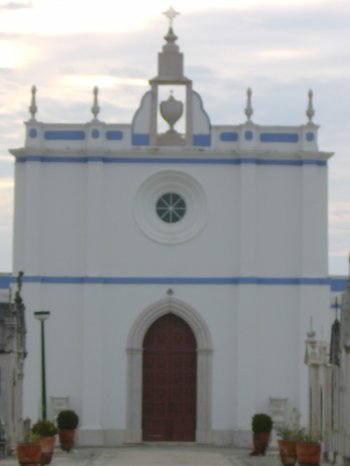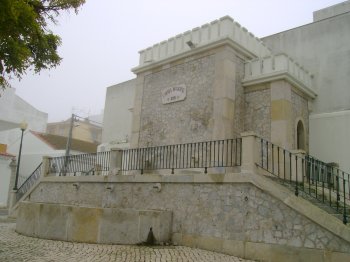Explore the best places
Monuments in Cartaxo
Capela do Santo Cristo
- heritage
Rua do Cemitério
2070-081, Cartaxo
Thought to have been built in the first half of the 17th century. It consists of nave and chancel. Is inserted inside the cemetery. The main façade has light blue trim, between 2 of which is a telescope, and is surmounted by a cross. Remains of the cartaxenses churches with more turnout, given the image of Christ Crucified.

Igreja Paroquial de Vale da Pinta / Igreja de São Bartolomeu
- heritage
Largo da Igreja
2070-559, Vale da Pinta
Religious monument composed of nave, Chapel and Bell Tower. Its simplicity is visible on the facade, white-washed, with a shot of white marble. The encimar wooden door is a narrow window and, on, top, a cross. Has an unusual shrine in the vault of the chancel.

Fonte do Largo do Hospital
- heritage
Largo do Hospital
2070, Cartaxo
Large font, located in a garden, in stone, with 3 cocks and semicircular sink. The sides are 2 flights of stairs that flow into a sort of balcony.

Homenagem aos Ciclistas do Concelho do Cartaxo
- heritage
Rua 16 de Novembro
2070, Cartaxo
Monument erected in honor of cyclists from Cartaxo, some of them winners of Portugal back on bike.


Igreja do Espírito Santo / Igreja Paroquial da Ereira
- heritage
Rua da Fonte
2070-308, Ereira
Religious monument belonging to the order of Malta, consisting of nave and chancel juxtaposed and Bell Tower. In 1758 knew each other 3 altars dedicated to Our Lady of the Rosary, our Lady of the conception and the Friar João Gonçalves da Câmara, Knight Commander of the order of Malta. In the 18th century it was rebuilt the Bell Tower.

Capela de Nossa Senhora do Desterro
- heritage
Largo do Rio da Fonte
2070-397, Pontével
The early church was built in the 16th century, which remains the Manueline portal. In 1970 was destroyed to make way for that today. The façade is rounded and consists of nave, chancel, belfry and vestry. Inside you can see 17TH century tiles and a wooden bench at the entrance, 1635, rebuilt during the rebuilding of the new Church. Currently, in late August, receives the feasts of Nossa Senhora do Desterro.
